Signs You Made An important Impression On Drain Jetting
These advancements set the stage for the evolution of modern water utilities. In Roman times, the advent of aqueducts revolutionized the delivery of water to urban areas. In addition, they also established the rudimentary concept of wastewater management. The Romans were pioneers in constructing sophisticated water utilities, transporting water from distant sources to cities via a network of channels, tunnels and bridges.
In order to truly appreciate the gravity of the blocked drain menace, it is imperative to delve into the nitty-gritty details and unearth the core reasons behind its perilous nature. Indeed, many might argue it is a seemingly unavoidable and unfortunate aspect of property ownership, with many assuming it's an inconsequential nuisance rather than a critical concern. Every homeowner, at some point or another, drain survey report has experienced the inconvenience and unsightly nature of blocked drains. Conversely, the implications of blocked drains extend way beyond inconvenience, potentially taking a toll on human health and water leak repair the environment.
Although challenges abound, the ingenuity, determination and creativity that defined the birth and evolution of water utilities promises a future — a future where everyone, everywhere, has equitable access to clean and safe water. In conclusion, water utilities, ground penetrating radar from their rudiments in ancient civilizations to their modern sophisticated forms, have continued to shape human civilization. They underscore the intertwined fate of humanity with water – our most precious and essential resource.
This will involve transitioning to localized water treatment systems, incorporating renewable energy sources into operations, and adopting new business models such as performance-based contracting and public-private partnerships. As such, the future of water utilities will likely be digital, distributed, and decentralized.
Implementing punitive measures for poor waste disposal practices will serve as a deterrent and make individuals and corporations accountable. Moreover, authorities can roll out awareness initiatives to educate the community about the dire implications of blocked drains and promote responsible disposal habits. Legislative reforms to regulate industrial waste disposal into the public sewer system could also help combat the problem.
CCTV drain surveys were undertaken annually to detect potential blockages, followed by routine cleaning to remove any obstructions. Notably, the city also prioritised regular maintenance of the drains, ensuring their unimpeded functioning.
Water utilities are additionally embracing complex and innovative business models to ensure delivery efficiency and financial sustainability. Modern water utilities are also adapting to augment water supply and ensure resource sustainability. This includes the use of alternative water sources such as desalinated seawater, recycled wastewater, and harvested rainwater. Recycling wastewater, for instance, provides a sustainable revenue stream when reclaimed water is sold for industrial or agricultural irrigation.
To conclude, the essence of water utilities mirrors the essence of water itself – a fundamental necessity that supports life, progress, and prosperity. Hence, understanding its history, appreciating its present, and gpr survey envisioning its future is not just a matter of academic interest but a necessity for surviving and thriving in a world where wessex water leak repair is becoming increasingly precious.
Their roles evolved substantially in the face of the increasing challenges of urbanization, environmental conservation, climate change and the need for equitable distribution of water resources. An assortment of experts, managers, engineers, and scientists ensured the efficient functionality of these utilities. In the 20th Century, water utilities grew into complex systems encompassing a broad range of operations, including water collection, purification, distribution, drain repairs cctv wastewater collection and wastewater treatment.
Also, CCTV cameras were used to help engineers identify blockages without having to excavate - speeding up the process of identifying and rectifying problems. 3) Use of Modern Technology: gpr survey New sewage trucks were introduced, equipped with high-pressure water systems to break up stubborn blockages.
The blocked water reverses its course of flow, leading to a visible pool of stagnant water and a potential breeding ground for bacteria and insects. A blocked drain, in essence, is a situation whereby waste material obstructs the free-flowing path within a drainage system. This obstruction could be attributable to a myriad of causes, including fat and oil accumulation from kitchen sinks, hair from bathroom drains, cctv drain survey or unsuitable materials flushed down the toilet.
These utilities employ state-of-the-art technologies and techniques such as smart metering systems, advanced water treatment processes, digital mapping, cctv drain survey and . Modern water utilities provide communities with safe, reliable, and affordable drinking water supplies, drain jetting ensure wastewater is properly treated and safely discharged, and manage stormwater to protect our environment. Now, water infrastructure has come of age, drain cctv with highly sophisticated water treatments and delivery systems.

Reviews